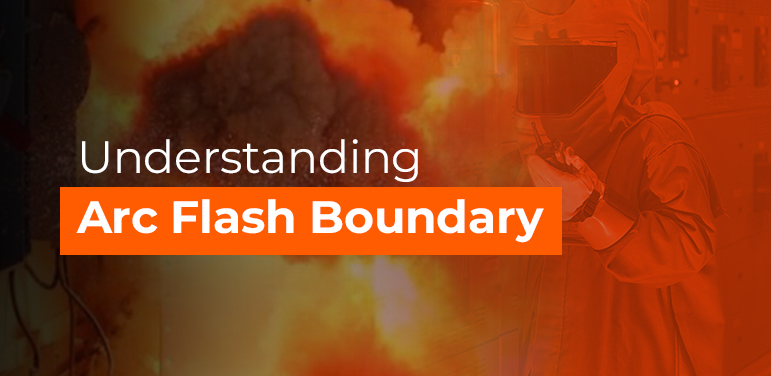Arc flash hazards can occur in any location where electrical equipment is present. Some common locations where arc flash hazards may be present include:
- Power generation facilities, such as power plants and substations
- Industrial facilities, such as factories and manufacturing plants
- Commercial buildings, such as office buildings and retail stores
- Data centres and other computer facilities
- Residential buildings, such as homes and apartments
In general, any location where electrical equipment is used or maintained is at risk for an arc flash hazard. This includes areas where electrical panels and switchgear are located, as well as areas where electrical cables and wires are present.
What is an arc flash boundary?
An arc flash boundary is a distance from electrical equipment within which a person could receive a dangerous electrical shock or burn from an arc flash. An arc flash is a type of electrical explosion that occurs when there is a sudden release of electrical energy from an electrical system. It is caused by a fault or malfunction in the system, and it can release a huge amount of energy in the form of heat, light, and pressure.
The arc flash boundary is determined by the potential energy of the arc flash, as well as the type and amount of protective clothing and equipment that a person is wearing. The boundary is typically marked with warning signs and labels to alert workers of the danger.
In general, the larger the potential energy of the arc flash, the larger the arc flash boundary will be. For example, an arc flash in a high-voltage substation may have a larger arc flash boundary than an arc flash in a residential building.
It is important for workers who may be exposed to arc flash hazards to understand the arc flash boundary and to take appropriate precautions to protect themselves. This may include wearing protective clothing and equipment, following safe work practices, and being aware of the location of the arc flash boundary at all times.
Role of protective clothing in determining arc boundary
Protective clothing is an important factor in determining the arc flash boundary because it helps to protect people from the effects of an arc flash. The type and amount of protective clothing that a person is wearing can affect the distance at which they can be safely located from electrical equipment during an arc flash event.
Protective clothing for arc flash protection typically includes a flame-resistant outer layer, such as a coverall or apron, as well as protective gloves, sleeves, and head and face protection. The level of protection provided by the clothing is typically rated in terms of the level of incident energy that it can withstand.
For places with large arc flash boundaries, it may be necessary to wear protective clothing with a higher level of protection. This may include clothing with a higher arc rating, which is a measure of the level of incident energy that the clothing can withstand.
It is important to select protective clothing that is appropriate for the specific arc flash hazards present at a particular location. This may require consulting with an expert or reviewing the manufacturer’s recommendations for the clothing.
For more information on products, kindly mail us at info@tarasafe.in


Leave a Reply